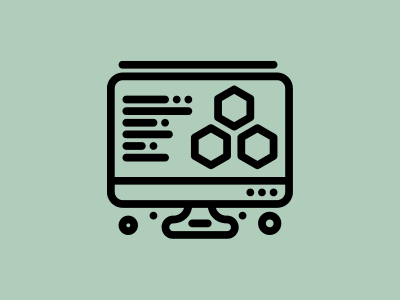Protect Your Code and Keep Hackers at Bay: Mastering JavaScript Security Best Practices

In the ever-evolving digital landscape, protecting your code and keeping hackers at bay is more crucial than ever before. JavaScript, being one of the most widely used programming languages, is an enticing target for malicious attacks. To ensure the security of your JavaScript code, it is essential to master the best practices that will safeguard your applications and data.
This article provides invaluable insights into JavaScript security best practices that every developer should adhere to. From input validation and proper error handling to secure coding techniques and vulnerability scanning, we will explore the key strategies to fortify your code.
By implementing these security measures, you can mitigate the risks of cross-site scripting (XSS) attacks, code injection, data leaks, and other vulnerabilities that hackers exploit to compromise your applications. Stay one step ahead of cybercriminals, safeguard your valuable code, and protect your users’ information.
Don’t leave your code defenseless – join us as we delve into the world of JavaScript security and arm yourself with the knowledge to safeguard your digital assets.
Table of Contents
The Importance of JavaScript Security
JavaScript is the backbone of the modern web, bringing interactivity and functionality to websites and web applications. However, its popularity also makes it an attractive target for hackers. JavaScript vulnerabilities can lead to significant consequences, such as unauthorized access, data breaches, and compromised user privacy. Therefore, prioritizing JavaScript security is crucial to protect your code and ensure the integrity of your applications.
One of the primary reasons why JavaScript security is essential is the prevalence of cross-site scripting (XSS) attacks. XSS attacks occur when malicious code is injected into a website or web application, allowing attackers to bypass security measures and execute scripts on unsuspecting users’ browsers. This can lead to the theft of sensitive information, unauthorized actions, and the spread of malware.
Another significant threat to JavaScript code is code injection attacks. Code injection occurs when an attacker is able to insert malicious code into a vulnerable application, which can lead to the execution of arbitrary commands and potential compromise of the entire system. Proper input validation and sanitization techniques are essential to prevent code injection vulnerabilities.
Common Threats to JavaScript Code
JavaScript code faces a multitude of threats that can compromise the security of your applications and data. Understanding these threats is the first step towards effectively protecting your code and keeping hackers at bay.
JavaScript Security Best Practices
To protect your JavaScript code from malicious attacks, it is crucial to follow a set of best practices that address common vulnerabilities. By implementing these practices, you can significantly reduce the risk of security breaches and ensure the robustness of your applications. Let’s explore some of the most important JavaScript security best practices:
1. Implementing Secure Coding Practices
Secure coding practices play a fundamental role in JavaScript security. By following secure coding guidelines, you can minimize the likelihood of introducing vulnerabilities into your codebase. Some essential practices include:
- Avoiding the use of eval(): The eval() function in JavaScript can be a security risk, as it executes arbitrary code. It is best to find alternative solutions to achieve the desired functionality without relying on eval().
- Using strict mode: Enabling strict mode in JavaScript helps enforce stricter rules, reducing the possibility of introducing coding mistakes and security vulnerabilities.
- Sanitizing user input: Input validation is crucial to prevent code injection attacks. Always validate and sanitize user input to ensure it adheres to the expected format and does not contain malicious code.
2. Protecting Against Cross-Site Scripting (XSS) Attacks
Cross-site scripting (XSS) attacks are one of the most prevalent security threats for JavaScript-based applications. To protect against XSS attacks, consider the following practices:
- Implementing output encoding: Encode user-generated content and any dynamic content that is displayed on your web pages. This helps prevent the execution of injected malicious scripts.
- Using Content Security Policy (CSP): CSP allows you to define a policy that specifies which resources are allowed to be loaded by your web pages. It can help mitigate the impact of XSS attacks by restricting the sources from which scripts can be executed.
- Using HTTP-only cookies: Ensure that sensitive information stored in cookies, such as session tokens, is marked as HTTP-only. This prevents client-side scripts from accessing the cookie contents, reducing the risk of XSS attacks.
3. Preventing Code Injection Attacks
Code injection attacks can have severe consequences, allowing attackers to execute arbitrary code and gain unauthorized access to your system. To prevent code injection vulnerabilities, consider the following practices:
- Using parameterized queries or prepared statements: When interacting with databases, use parameterized queries or prepared statements instead of dynamically constructing SQL queries. This helps prevent SQL injection attacks.
- Implementing input validation and sanitization: Validate and sanitize all user input before using it in your code or storing it in databases. This helps prevent code injection attacks by ensuring that user input is treated as data and not executable code.
- Avoiding concatenation for code generation: Instead of dynamically generating code by concatenating strings, consider using template engines or libraries that provide safer alternatives. This reduces the risk of code injection vulnerabilities.
4. Securing Sensitive Data in JavaScript
When handling sensitive data in JavaScript, it is crucial to take appropriate measures to protect it from unauthorized access. Consider the following practices:
- Encrypting sensitive data: Use encryption algorithms to protect sensitive data from being exposed in case of a security breach. Encrypting data ensures that even if it is intercepted, it remains unreadable without the decryption key.
- Securing network communications: Use secure protocols such as HTTPS when transmitting sensitive data over the network. This ensures that data is encrypted during transmission, making it difficult for attackers to intercept and tamper with the information.
- Implementing access controls: Ensure that only authorized users have access to sensitive data. Implement proper authentication and authorization mechanisms to prevent unauthorized access to confidential information.
The Role of Encryption in JavaScript Security
Encryption plays a vital role in JavaScript security by ensuring that sensitive data remains protected, even if it falls into the wrong hands. Properly implementing encryption techniques can significantly enhance the security of your JavaScript code.
5. Regularly Updating and Patching JavaScript Libraries
JavaScript libraries and frameworks play a vital role in modern web development. However, outdated or vulnerable libraries can introduce security risks into your applications. To mitigate this risk, follow these practices:
- – Regularly update libraries: Keep track of updates and security patches released by the library developers. Update your JavaScript libraries regularly to ensure that you are using the latest and most secure versions.
- – Audit third-party libraries: Before integrating a third-party library into your project, perform a thorough security audit to ensure that it does not introduce any vulnerabilities.
- – Remove unused libraries: Remove any unused libraries from your codebase. Unused libraries can pose security risks if they contain known vulnerabilities that are not being addressed.
Conclusion: Ensuring the Security of Your JavaScript Code
Protecting your JavaScript code from hackers is a crucial aspect of developing secure and robust applications. By following JavaScript security best practices, such as implementing secure coding practices, protecting against XSS attacks, preventing code injection, securing sensitive data, and regularly updating libraries, you can significantly reduce the risk of security breaches and safeguard your digital assets.
Remember, the digital landscape is constantly evolving, and hackers are continually finding new ways to exploit vulnerabilities. Stay proactive by staying updated with the latest security practices and regularly assessing your codebase for potential risks. By prioritizing JavaScript security, you can ensure the integrity of your applications, protect your users’ information, and keep hackers at bay.
Safeguard your code, protect your users, and fortify your applications – master JavaScript security best practices today.





